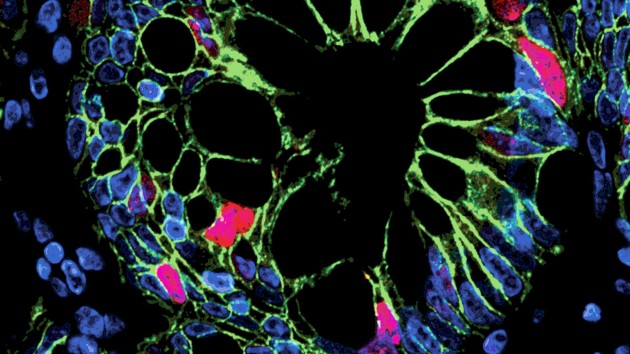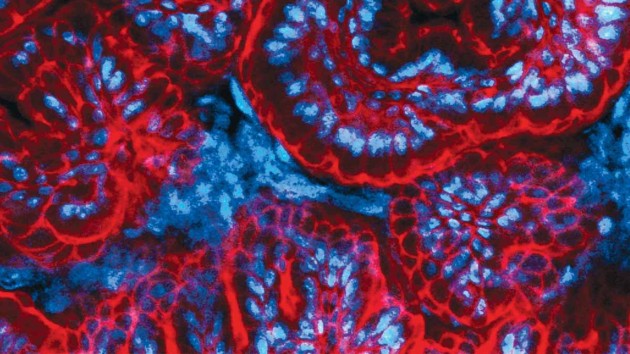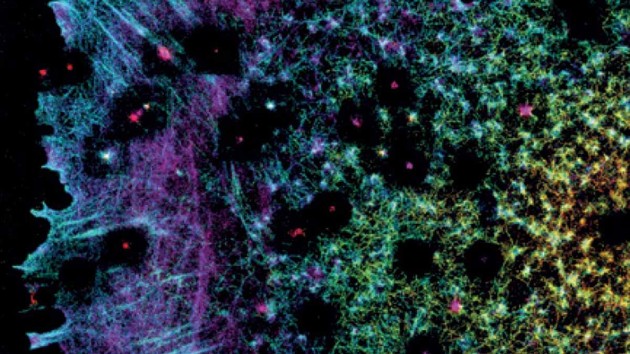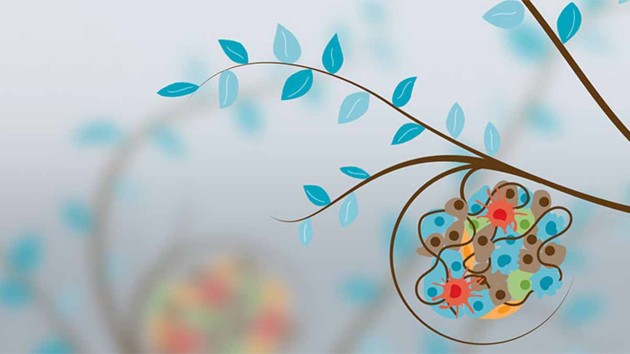Collection |
Collections
Filters
-
Collection Type
-
-
Collection |
 The 3D genome
The 3D genome
This collection includes recent articles from across the Nature group of journals and showcases both the latest advances in the methodologies used to study genome organization, and our recent understanding of how genome organization and nuclear architecture regulate gene expression, cell fate and cell function in physiology and disease.
Image: V. Summersby -
Collection |
 Stem cells from development to the clinic
Stem cells from development to the clinic
Stem cells are well on their way into the clinic and can be used in a variety of applications, such as disease modelling, drug screening and for regenerative medicine. This collection showcases research articles, reviews and protocols from across the Nature journals to highlight the striking advances made in basic and translational stem cell research.
Image: Miguel Quiros and Asma Nusrat -
Collection |
 Organoid research
Organoid research
Organoids are 3D organ models with remarkable potential in basic and translational research. This collection showcases research articles, reviews and protocols from across the Nature journals to highlight the striking advances made.
Image: Nick Barker and Marc Leushacke -
Collection |
 Super-resolution microscopy
Super-resolution microscopy
Popularization of super-resolution imaging techniques has allowed cell biologists to probe cell structure and function in previously unattainable detail. These methodologies continue to evolve, with new improvements that allow tailoring the available techniques to a particular need and application. This collection showcases primary research articles, reviews and protocols and highlights these recent developments by exemplifying the new, interesting applications of super-resolution microscopy as well as related tool development.
Image: Bertocchi et al., Nature Cell Biology volume 19, pages 28–37 (2017). -
Collection |
 Cancer Evolution
Cancer Evolution
In this collection, the cancer editorial community of the Nature journals presents the most recently published articles on cancer evolution. The topic is discussed from different angles (preclinical, translational and clinical), and across a range of tumour types.
-
Collection |
 Autophagy
Autophagy
A web focus from Cell Death & Differentiation, Cell Death & Disease, Nature Reviews Cancer, Nature Cell Biology, Nature Reviews Molecular Cell Biology and Nature Structural & Molecular Biology. We hope you enjoy this focus including work from the world's most recognized experts in the field of autophagy.
-
Collection |
Collections: RNAi
Gene silencing through RNA interference (RNAi) has become the tool of choice for genome-scale, high-throughput analyses of gene function and has had a tremendous impact on science and drug discovery. Now, RNAi libraries targeting whole genomes or functionally related pathways permit systematic screens for clinically relevant components of cellular networks. Advances in rational design, sequence selection strategies and delivery options have substantially improved the utility of short interfering RNA (siRNA), short hairpin RNA (shRNA) and microRNA (miRNA) tools for screening.
-
Collection |
 Focus on fertility
Focus on fertility
A joint web focus and print supplement between Nature Medicine and Nature Cell Biology.

 Stem cells from development to the clinic
Stem cells from development to the clinic